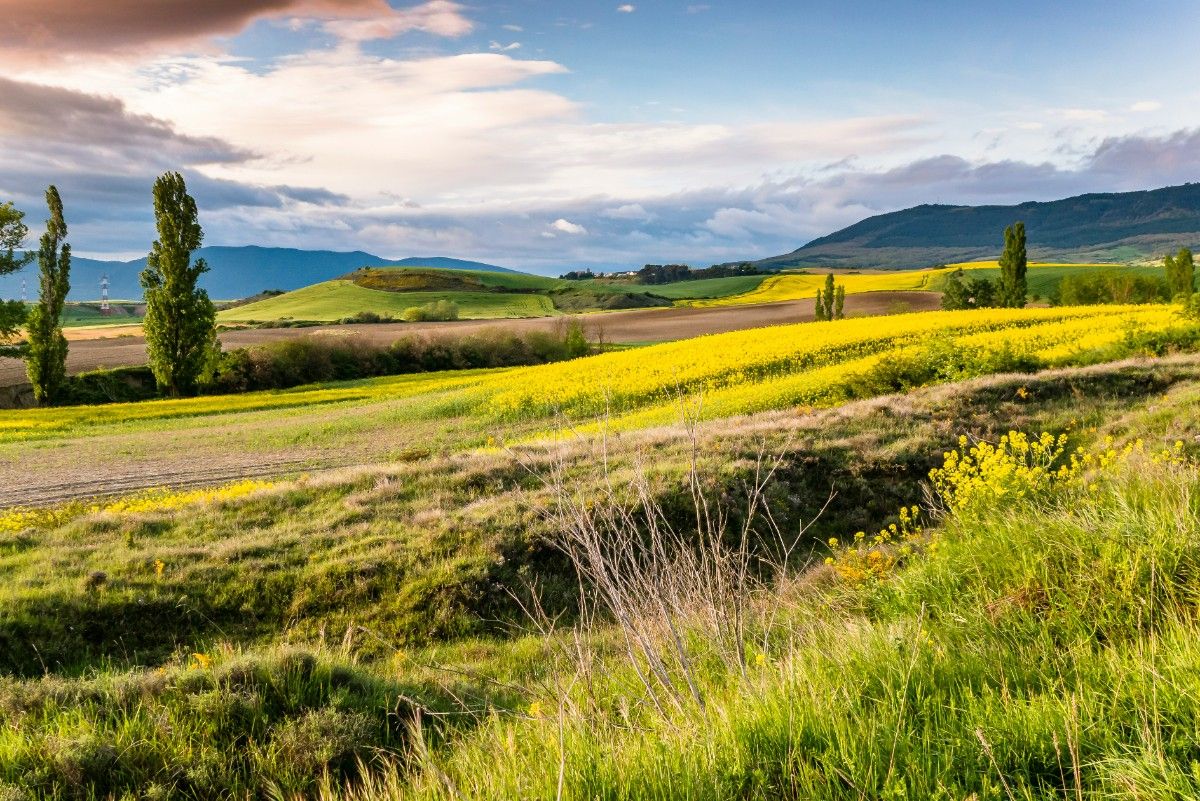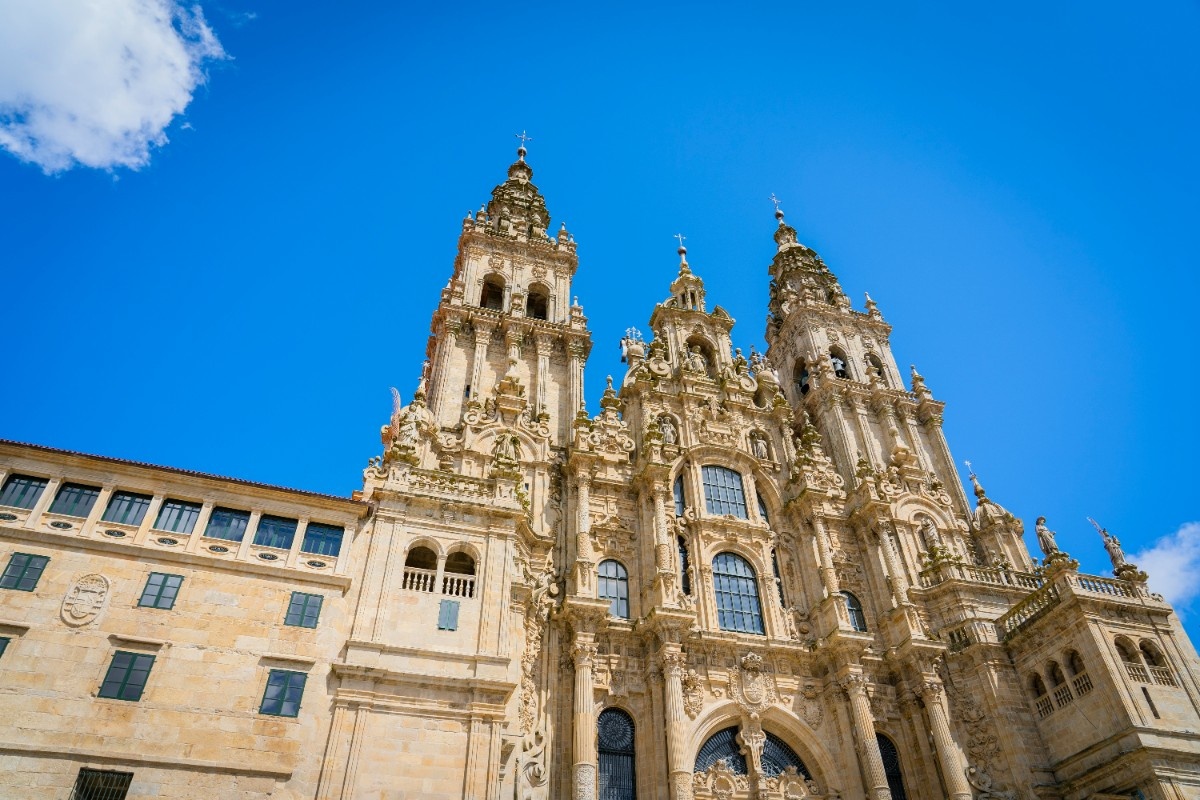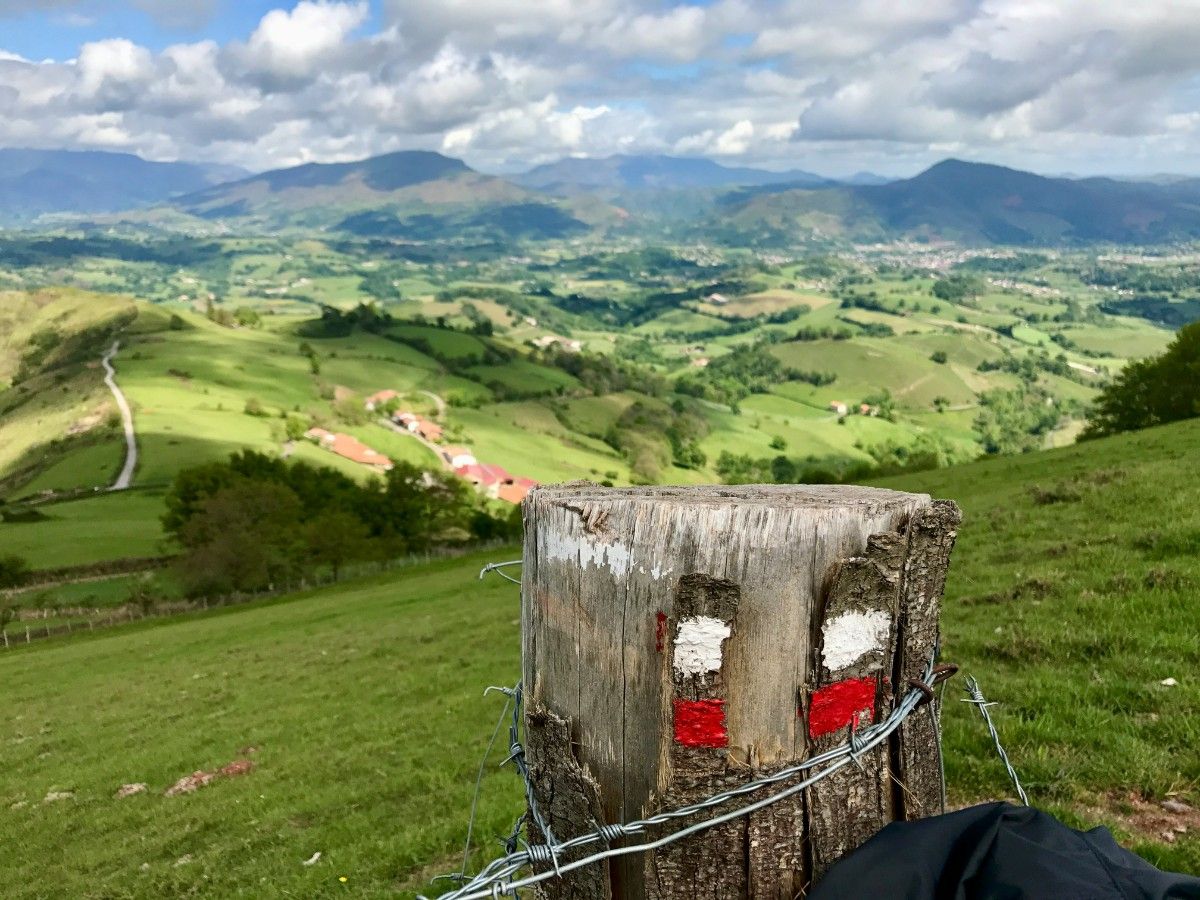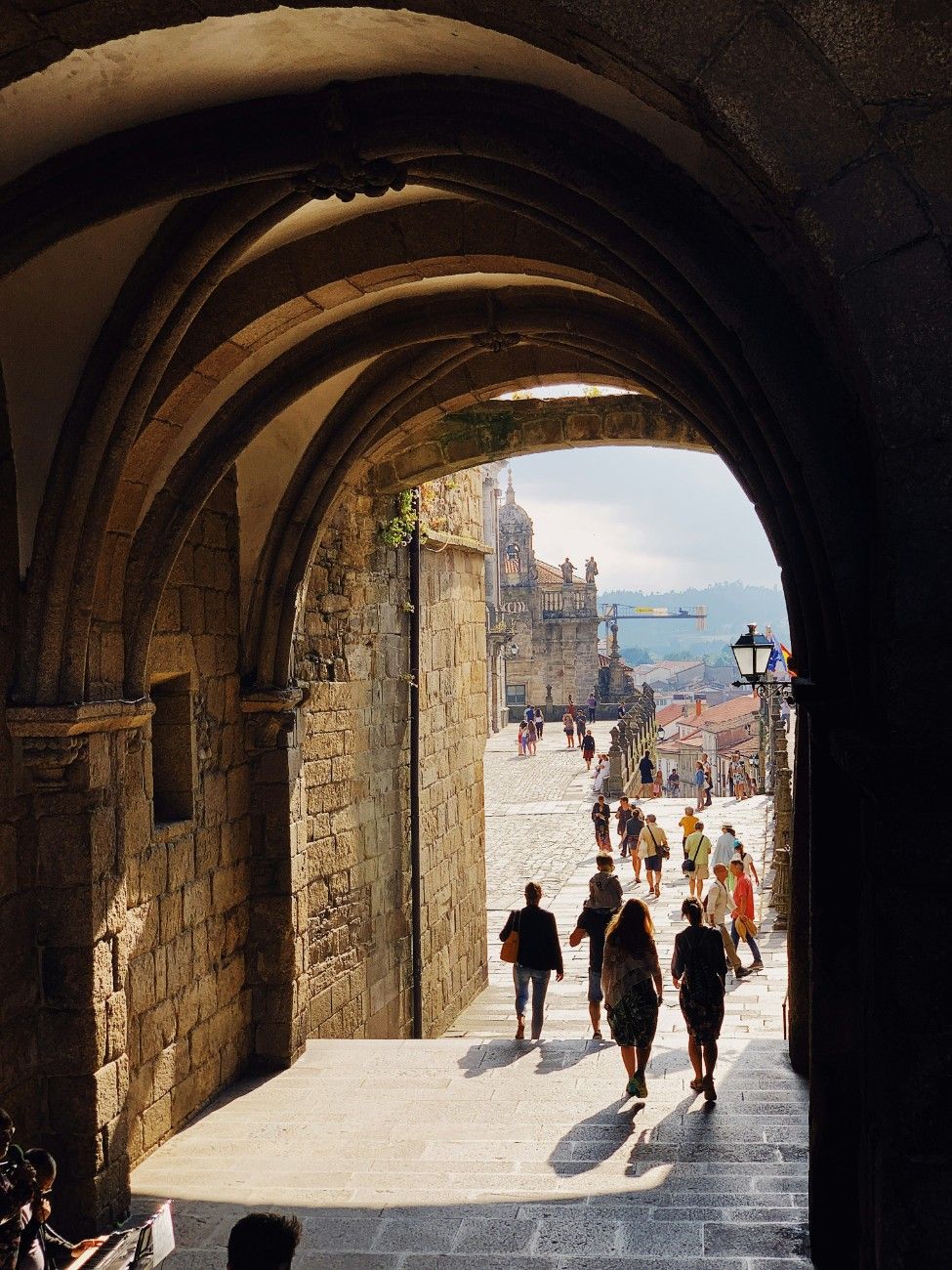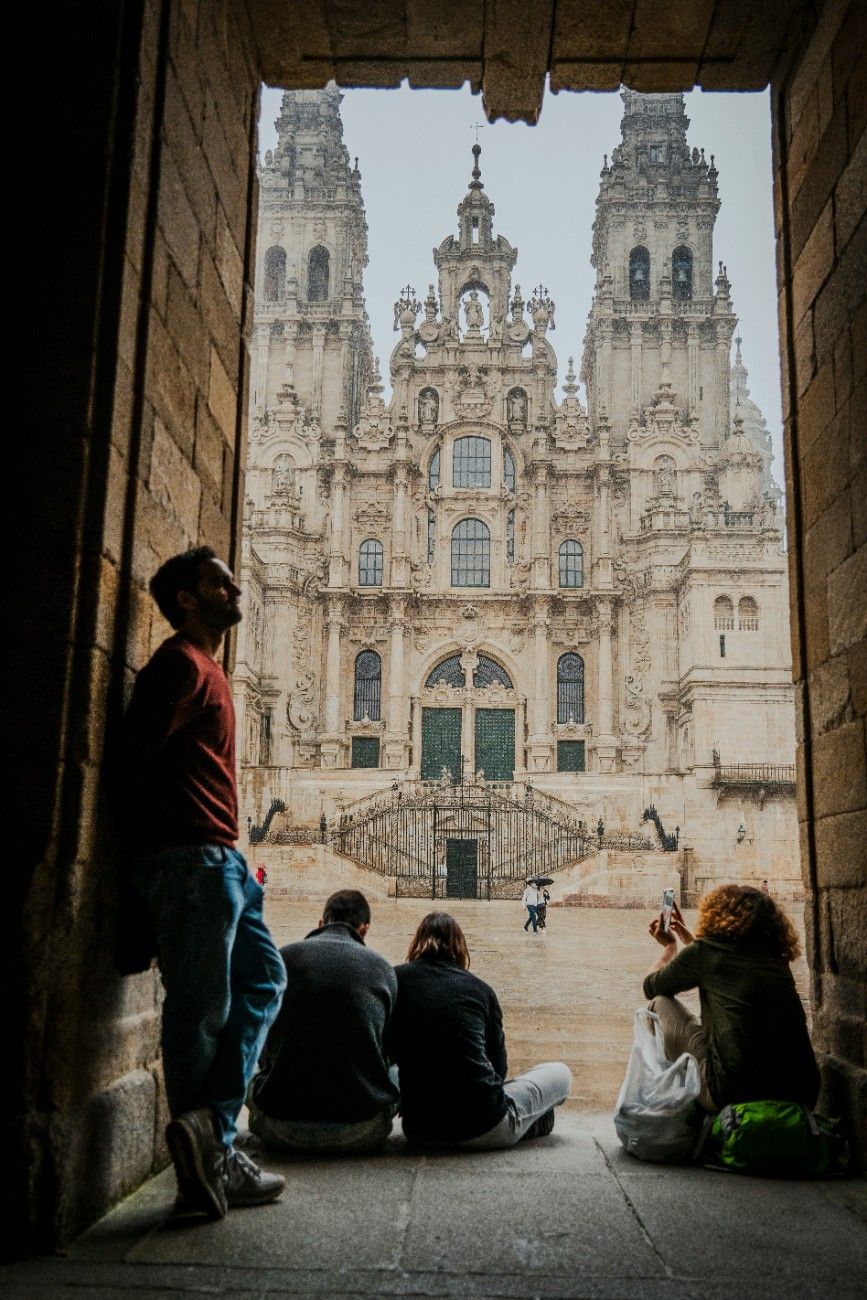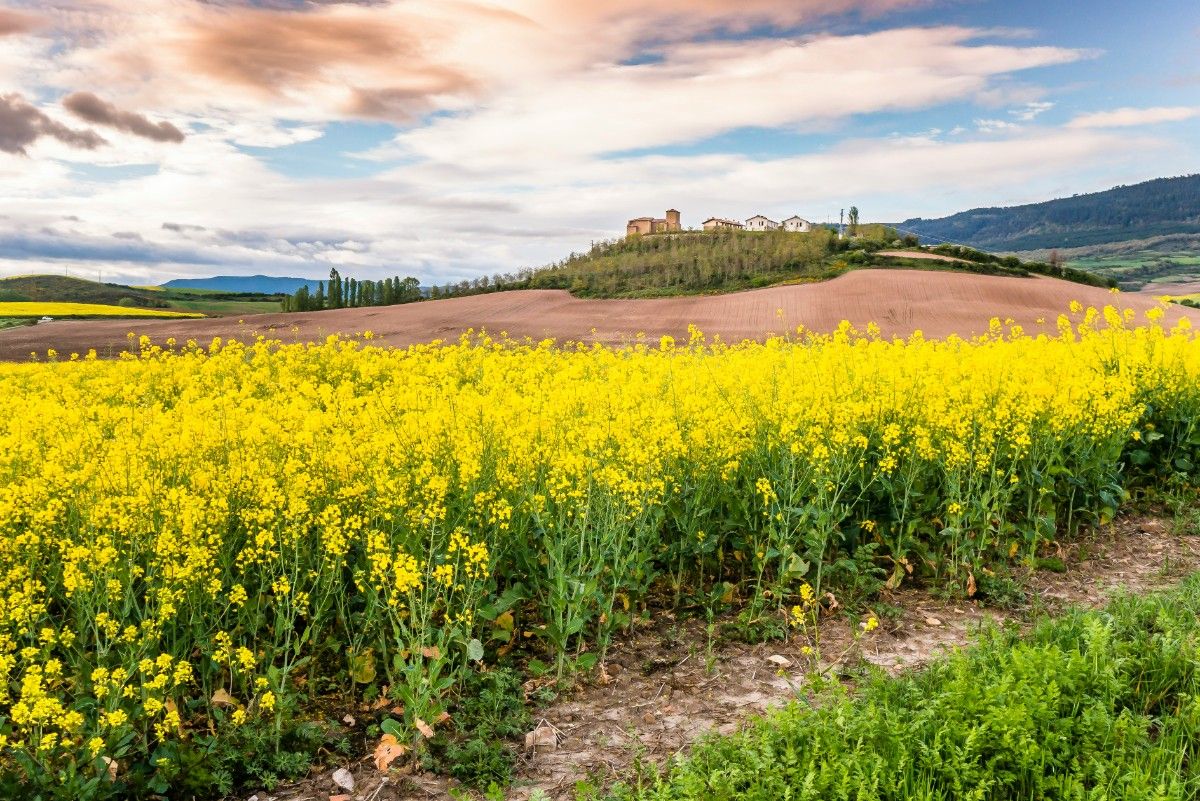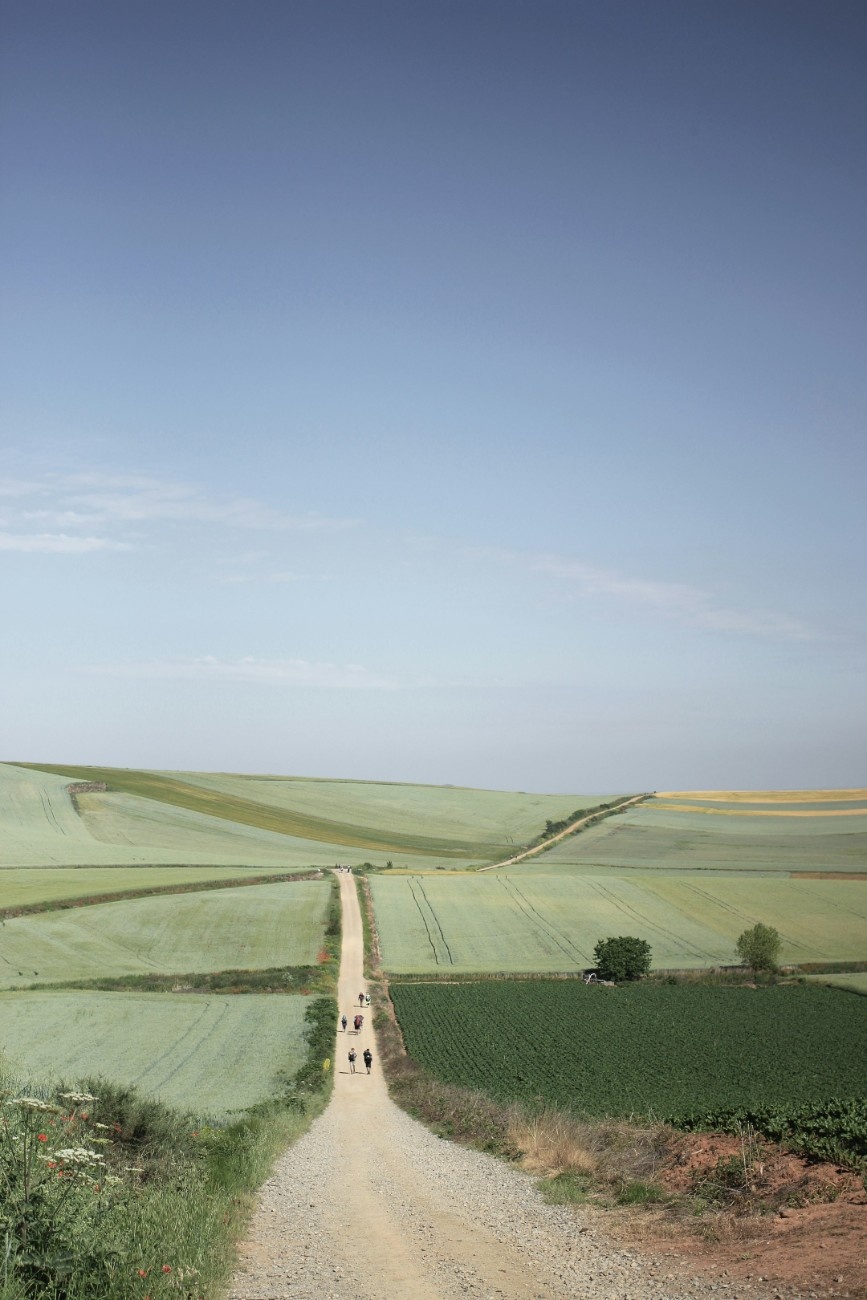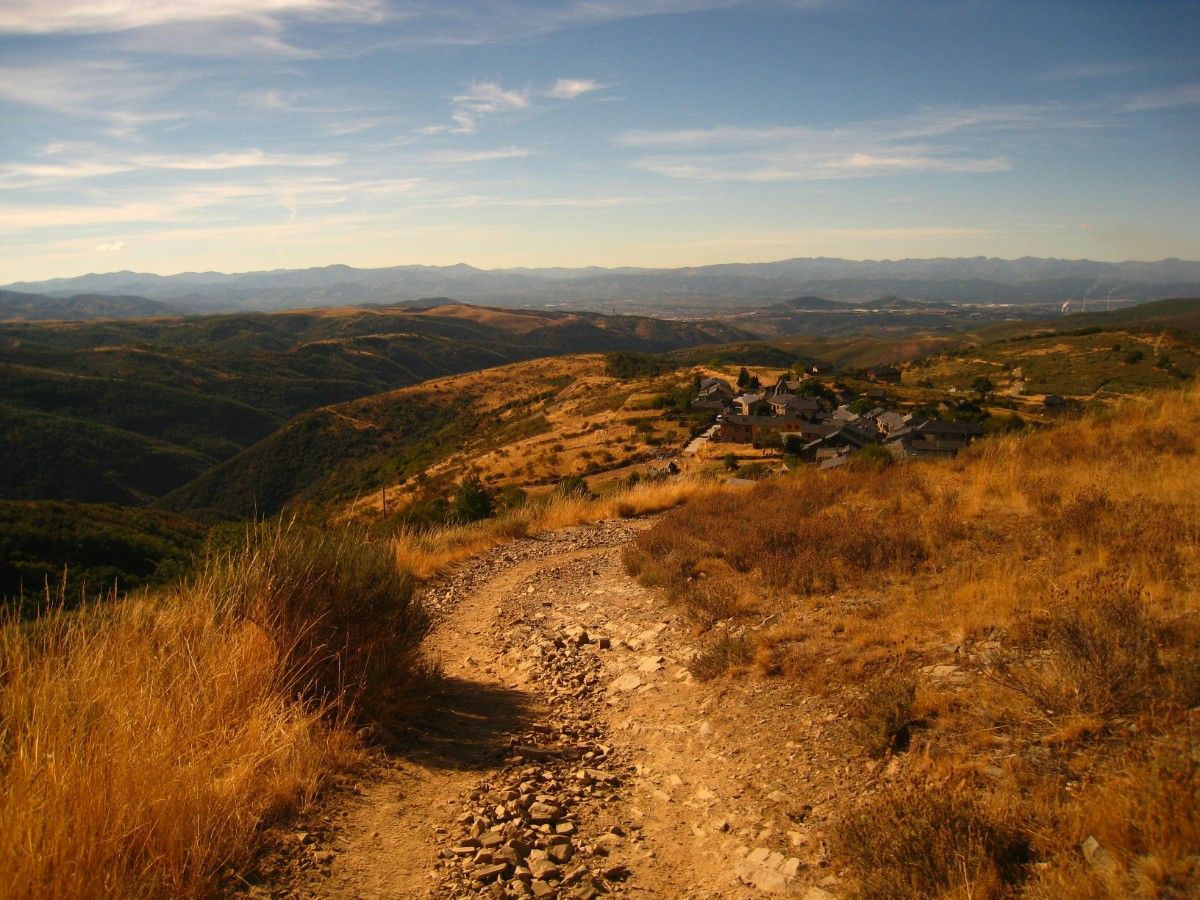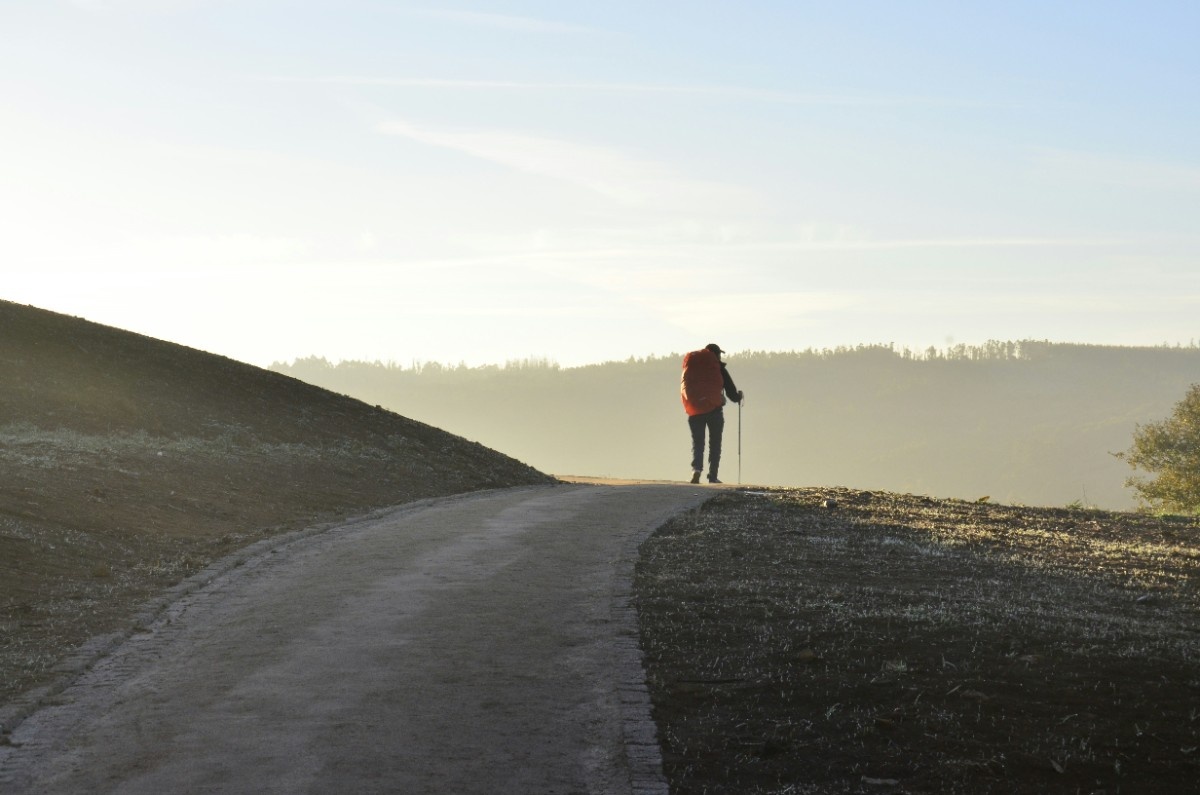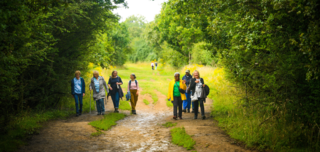The Allure of El Camino de Santiago
A Journey of Self-Discovery and Spirituality
El Camino de Santiago, or the Way of Saint James, has captivated the hearts and minds of pilgrims for centuries. This ancient pilgrimage route, which spans across various regions of Spain and beyond, offers a unique opportunity for self-discovery and spiritual growth. Many embark on this journey seeking to disconnect from the distractions of modern life and reconnect with their inner selves. The Camino de Santiago provides a chance to slow down, reflect, and find meaning in the simplicity of walking through breathtaking landscapes and historic towns. Whether you are seeking spiritual enlightenment, a physical challenge, or simply a break from the stresses of everyday life, the Camino de Santiago beckons to those ready to embark on a transformative adventure.
The Rich History and Cultural Heritage
One of the most alluring aspects of El Camino de Santiago is its rich history and cultural heritage. The pilgrimage has its roots in the 9th century, when the remains of Saint James the Apostle were discovered in what is now Santiago de Compostela. Since then, countless pilgrims have followed in the footsteps of those before them, creating a living tapestry of stories, traditions, and legends. As you walk the Camino de Santiago, you will encounter historic cities, charming villages, and magnificent cathedrals that have stood the test of time. You will also have the opportunity to immerse yourself in the unique customs and traditions of the regions you pass through, from the hearty cuisine of Galicia to the lively festivals of Navarre. By engaging with the local culture and history, you will gain a deeper appreciation for the significance of this ancient pilgrimage and its enduring impact on the lives of those who undertake it.
A Test of Resilience and Personal Growth
Walking the Camino de Santiago is not just a physical journey, but also a mental and emotional one. The long distances, varied terrain, and unpredictable weather can test your limits and push you outside of your comfort zone. However, it is through these challenges that many pilgrims find the opportunity for personal growth and transformation. As you overcome obstacles and push through difficult moments, you will discover a newfound sense of resilience and strength within yourself. You will learn to trust in your own abilities and to find joy in the simple pleasures of life, such as a stunning sunset or a conversation with a fellow pilgrim. The Camino de Santiago teaches valuable lessons about perseverance, adaptability, and the importance of living in the present moment. By embracing the challenges and uncertainties of the journey, you will emerge a stronger, more self-aware, and more compassionate individual.
Exploring the Various Camino de Santiago Routes
The Camino Francés: The Classic Route
The Camino de Santiago routes offer a diverse range of experiences for pilgrims, each with its own unique character and challenges. The most popular and well-known route is the Camino Francés, or the French Way. This classic route of Camino de Santiago stretches nearly 800 kilometres from Saint-Jean-Pied-de-Port in France to Santiago de Compostela in Spain. Along the way, pilgrims will traverse the picturesque landscapes of Navarre, La Rioja, Castile and León, and Galicia, passing through historic cities such as Pamplona, Burgos, and León. The Camino Francés is well-signposted and equipped with a wide range of accommodations, making it an excellent choice for first-time pilgrims or those seeking a more structured and supported journey. However, it is also one of the busiest routes, particularly during the summer months, so those seeking a more solitary experience may wish to consider alternative paths.
The Camino Del Norte and Camino Primitivo: Coastal and Mountain Routes
For those seeking a more off-the-beaten-path experience, the Camino Del Norte and Camino Primitivo offer stunning coastal and mountain scenery, respectively. The Camino Del Norte, or the Northern Way, follows the rugged coastline of northern Spain, offering breathtaking views of the Bay of Biscay and the Cantabrian Mountains. This route is known for its cooler temperatures, lush green landscapes, and charming fishing villages. The Camino Primitivo, or the Original Way, is the oldest Camino de Santiago route and is believed to be the path taken by the first recorded pilgrimage to Santiago de Compostela in the 9th century. This challenging route traverses the rugged terrain of Asturias, rewarding pilgrims with stunning mountain vistas and a sense of solitude and adventure. Both the Camino Del Norte and Camino Primitivo are less crowded than the Camino Francés, making them ideal for those seeking a more intimate and reflective journey.
The Camino Portugués and Other Routes
Another popular Camino de Santiago route is the Camino Portugués, or the Portuguese Way, which starts in Lisbon and winds its way through the countryside of Portugal before crossing into Spain. This route offers a unique blend of Portuguese and Spanish culture, as well as stunning coastal scenery and historic towns and cities. Other notable routes include the Via de la Plata, which starts in Seville and crosses the vast plains of western Spain, and the Camino Inglés, a shorter route that begins in the Galician port cities of Ferrol or A Coruña. No matter which Camino de Santiago walk you choose, you will have the opportunity to create your own unique journey and to connect with the rich history, culture, and natural beauty of the region. By exploring the various Camino de Santiago routes, you can tailor your experience to your individual preferences, physical abilities, and spiritual goals, ensuring a truly unforgettable and transformative adventure.
Navigating the Camino de Santiago: Maps and Resources
Essential Maps for the Camino de Santiago
When preparing for El Camino de Santiago, having reliable maps is crucial for a successful and safe journey. There are various types of maps available, each serving a specific purpose. A Camino de Santiago map with an overview of the entire route is essential for planning and understanding the general layout of the path. These maps often include key information such as the Camino de Santiago distance between towns, the location of albergues (pilgrim hostels), and notable landmarks. For a more detailed view, Camino de Santiago route maps provide a closer look at specific sections of the trail, including Elevation profiles, alternate paths, and points of interest. Topographic maps are also valuable for those who prefer a more comprehensive understanding of the terrain. When choosing maps, consider factors such as the Camino de Santiago length, the specific route you plan to take, and your personal preferences for detail and scale.
Guidebooks and Online Resources
In addition to maps, guidebooks and online resources are invaluable tools for navigating the Camino de Santiago. Guidebooks offer in-depth information about the history, culture, and practicalities of the pilgrimage, as well as detailed stage-by-stage descriptions of the route. They often include recommendations for accommodations, restaurants, and local attractions, as well as tips for dealing with common challenges such as blisters or inclement weather. Online resources, such as the official Camino de Santiago website and pilgrim forums, provide up-to-date information about trail conditions, closures, and events, as well as a platform for connecting with other pilgrims and sharing experiences. When selecting guidebooks and online resources, look for reputable sources with a proven track record of accuracy and reliability. It can also be helpful to cross-reference multiple sources to ensure you have a comprehensive understanding of the route and its challenges.
Technology and Mobile Apps
In recent years, technology has played an increasingly important role in navigating the Camino de Santiago. Mobile apps, such as Buen Camino and Camino Assist, offer interactive maps of Camino de Santiago, real-time location tracking, and up-to-date information about accommodations, weather, and trail conditions. These apps can be particularly useful for those who prefer a more digital approach to navigation or who want to have backup resources in case of unexpected changes or challenges. However, it is important to remember that technology can be unreliable, particularly in remote areas with limited phone service or battery charging options. It is always a good idea to carry physical maps and guidebooks as a backup, and to have a basic understanding of how to navigate using traditional methods such as compass and landmark recognition. By combining digital and analogue resources, you can ensure a safe and successful journey along the Camino de Santiago.
The Physical Challenge: Distance and Terrain of El Camino de Santiago
Understanding the Distances Involved
One of the most significant aspects of the Camino de Santiago is the sheer distance involved. The most popular route, the Camino Francés, spans approximately 800 kilometres (500 miles) from Saint-Jean-Pied-de-Port in France to Santiago de Compostela in Spain. This distance is typically divided into 33 stages, with each stage averaging around 24 kilometres (15 miles). While some pilgrims choose to complete the entire Camino de Santiago distance in one continuous journey, others opt to break it up into smaller sections or to walk a shorter route altogether. The Camino de Santiago length can be daunting, especially for those who are not accustomed to long-distance walking. However, with proper training, pacing, and self-care, most pilgrims find that the daily distances become more manageable over time. It is important to listen to your body and to take rest days as needed, particularly in the early stages of the journey when your body is still adjusting to the physical demands of the Camino.
Navigating the Varied Terrain
In addition to the distances involved, the Camino de Santiago also presents a range of physical challenges in terms of terrain. The route passes through a diverse range of landscapes, from the rolling hills of Navarre to the steep mountain passes of the Pyrenees and the Cantabrian Mountains. Pilgrims must navigate a variety of surfaces, including paved roads, dirt paths, and rocky trails, often with significant Elevation changes along the way. The Camino Francés, for example, includes several challenging ascents and descents, such as the climb over the Pyrenees in the first stage and the steep ascent to O Cebreiro in Galicia. Other routes, such as the Camino Del Norte and the Camino Primitivo, are known for their even more rugged and mountainous terrain, with fewer amenities and support services along the way. To prepare for the varied terrain of the Camino, it is important to train on a range of surfaces and to invest in sturdy, comfortable footwear with good traction and support.
Training and Preparation
Given the physical demands of the Camino de Santiago, proper training and preparation are essential for a safe and successful journey. Pilgrims should begin training several months in advance, gradually increasing their walking distances and intensity over time. It is also important to train on varied terrain, including hills and uneven surfaces, to build strength and endurance in the legs, feet, and core. In addition to physical training, pilgrims should also take steps to prepare their gear and supplies. This includes investing in a sturdy, well-fitted backpack, comfortable walking shoes, and moisture-wicking clothing layers. It is also important to plan ahead for potential physical challenges, such as blisters, chafing, and muscle soreness, by packing appropriate first-aid supplies and preventive measures. By taking the time to train and prepare properly, pilgrims can minimise the risk of injury and maximise their enjoyment of the Camino de Santiago experience.
The Spiritual Significance of El Camino de Santiago
The Historical and Religious Context
The Camino de Santiago has a rich spiritual history dating back to the 9th century, when the remains of Saint James the Apostle were discovered in Santiago de Compostela. According to tradition, Saint James had preached the gospel in the Iberian Peninsula before returning to Jerusalem, where he was martyred in 44 AD. The discovery of his remains marked the beginning of the Camino de Santiago pilgrimage, which became one of the most important Christian pilgrimages in medieval Europe. Over the centuries, countless pilgrims have walked the Camino de Santiago routes, seeking spiritual enlightenment, forgiveness of sins, and a deeper connection with God. The pilgrimage has been a source of inspiration for artists, writers, and religious figures, and has played a significant role in shaping the cultural and spiritual identity of Spain and Europe as a whole.
The Camino as a Metaphor for the Spiritual Journey
For many pilgrims, the Camino de Santiago is more than just a physical journey; it is a metaphor for the spiritual journey of life itself. The long distances, challenging terrain, and unpredictable weather of the Camino mirror the obstacles and trials that we face on our own paths towards personal and spiritual growth. Just as pilgrims must learn to persevere through difficult moments and trust in the journey ahead, so too must we learn to navigate the ups and downs of life with faith, resilience, and an open heart. The Camino de Santiago walk teaches us valuable lessons about letting go of attachments, living in the present moment, and finding joy and meaning in the simple things. By walking the Camino, pilgrims have the opportunity to strip away the distractions and complexities of modern life and to reconnect with the essence of their being, their purpose, and their relationship with the divine.
Interfaith Perspectives and Personal Spiritual Growth
While the Camino de Santiago has its roots in Christianity, its spiritual significance extends beyond any one religion or belief system. Today, pilgrims of all faiths and backgrounds walk the Camino, seeking a deeper understanding of themselves and their place in the world. The Camino de Santiago pilgrimage provides a unique opportunity for interfaith dialogue and understanding, as pilgrims from diverse cultures and traditions share their stories and perspectives along the way. For many, the Camino is a catalyst for personal spiritual growth and transformation, regardless of their specific religious beliefs. The act of walking, the simplicity of the daily routine, and the connections formed with other pilgrims and with nature all contribute to a profound sense of inner peace, clarity, and purpose. Whether seeking forgiveness, healing, or simply a deeper understanding of oneself and the world, the Camino de Santiago offers a powerful opportunity for spiritual awakening and renewal.
The Camino de Santiago Experience: A Pilgrim's Perspective
The Daily Rhythm of Walking
One of the most defining aspects of the Camino de Santiago experience is the daily rhythm of walking. Pilgrims typically wake up early, often before sunrise, to begin their day's journey. The morning hours are often the most peaceful and contemplative, as the world slowly awakens around you. As the day progresses, the Camino comes alive with the sounds of footsteps, conversation, and the rustling of backpacks. The act of walking itself becomes a form of meditation, a way to quiet the mind and focus on the present moment. Many pilgrims find that the repetitive motion of walking helps to clear their thoughts and to open them up to new insights and perspectives. The daily rhythm of walking also creates a sense of structure and purpose, as each day brings a new goal and a new destination. By embracing the simplicity and challenge of the daily walk, pilgrims are able to fully immerse themselves in the Camino de Santiago experience.
The Power of Community and Connection
Another key aspect of the Camino de Santiago is the sense of community and connection that develops among pilgrims. Despite coming from diverse backgrounds and cultures, pilgrims are united by the shared experience of the journey. The Camino has a way of stripping away the superficial barriers that often divide us, creating a space for authentic connection and understanding. Pilgrims often form deep bonds with one another, sharing stories, meals, and moments of laughter and tears. The sense of camaraderie and support that develops on the Camino is one of the most powerful and transformative aspects of the journey. Pilgrims learn to rely on one another, to offer help and encouragement when needed, and to celebrate each other's successes and milestones. This sense of community often extends beyond the Camino itself, with many pilgrims maintaining lifelong friendships and connections with those they met along the way.
Moments of Challenge and Triumph
The Camino de Santiago is not without its challenges, both physical and emotional. Pilgrims must contend with blisters, fatigue, and the unpredictable Elements of weather and terrain. There are moments of doubt and frustration when the road ahead seems endless and the destination impossibly far away. However, it is often in these moments of challenge that pilgrims discover their true strength and resilience. By pushing through the difficult moments and persevering in the face of adversity, pilgrims are able to experience a sense of triumph and accomplishment that is uniquely rewarding. The Camino teaches valuable lessons about the power of determination, adaptability, and inner strength. It also provides opportunities for profound personal growth and transformation, as pilgrims confront their own limitations and fears and emerge stronger and more self-aware on the other side. Ultimately, the Camino de Santiago experience is a testament to the human spirit and its capacity for growth, connection, and joy in the face of challenge and uncertainty.
Preparing for El Camino de Santiago: Packing List and Tips
Essential Gear and Equipment
When preparing for El Camino de Santiago, having the right gear and equipment is essential for a comfortable and safe journey. One of the most important items on any pilgrim's Camino de Santiago packing list is a sturdy, well-fitted backpack. The backpack should be large enough to hold all of your essential items, but not so large as to be cumbersome or heavy. A good rule of thumb is to pack no more than 10% of your body weight, including water and food. Other essential items include comfortable, broken-in walking shoes, moisture-wicking clothing layers, a lightweight sleeping bag or liner, and a refillable water bottle. It is also important to pack a basic first-aid kit, including blister treatment, pain relievers, and any personal medications. When choosing gear and equipment, look for lightweight, durable, and versatile items that can withstand the rigors of the Camino. It is also a good idea to test out your gear before the trip, to ensure that it fits properly, and functions as intended.
Packing Light and Smart
One of the most common mistakes that pilgrims make when preparing for the Camino de Santiago is overpacking. The temptation to bring every possible comfort and convenience can be strong, but the reality is that every extra item adds weight and bulk to your backpack. To walk the Camino de Santiago comfortably and efficiently, it is important to pack light and smart. This means focusing on essential items and leaving behind anything that is not absolutely necessary. When packing clothing, choose versatile, quick-drying layers that can be easily washed and dried along the way. Consider packing a small clothesline or travel laundry detergent to make washing clothes easier. When it comes to toiletries and personal care items, look for travel-sized or lightweight options, and consider sharing items with a walking partner to save space. By packing light and smart, you can minimise the physical burden of your backpack and maximise your enjoyment of the Camino.
Planning and Preparation Tips
In addition to packing the right gear and equipment, there are several other planning and preparation tips to keep in mind when preparing for the Camino de Santiago. One of the most important is to train and condition your body for the physical demands of the journey. This means gradually increasing your walking distances and intensity in the months leading up to the trip, and training on varied terrain to build strength and endurance. It is also important to plan your route and itinerary carefully, taking into account factors such as the time of year, the distance between towns, and the availability of accommodations and services. When planning your budget, be sure to account for expenses such as food, lodging, and transportation, as well as any unexpected costs that may arise. Finally, it is a good idea to learn some basic Spanish phrases and to familiarise yourself with the local customs and culture of the regions you will be visiting. By taking the time to plan and prepare carefully, you can ensure a safe, comfortable, and rewarding Camino de Santiago experience.
The Camino de Santiago Community: Pilgrim Hostels and Local Culture
The Albergue Experience
One of the most unique and beloved aspects of the Camino de Santiago is the network of pilgrim hostels, or albergues, that dot the various routes. Albergues are simple, dormitory-style accommodations that cater specifically to pilgrims, offering a place to rest, refuel, and connect with other walkers. Staying in albergues is an integral part of the Camino experience for many pilgrims, providing a chance to immerse oneself in the community and culture of the journey. Albergues range from basic municipal shelters to more upscale private hostels, but all share a common ethos of hospitality, simplicity, and camaraderie. Many albergues also offer communal meals, where pilgrims can gather to share food, stories, and experiences. The Albergue experience is a testament to the power of community and connection on the Camino, and a reminder of the simple joys of shared living and common purpose.
Engaging with Local Culture and Traditions
Another important aspect of the Camino de Santiago community is the opportunity to engage with the local culture and traditions of the regions through which the route passes. The Camino is not just a physical journey, but also a cultural and historical one, and pilgrims have the chance to immerse themselves in the unique customs, foods, and festivals of each area. From the hearty stews and fresh seafood of Galicia to the lively festivals and folk music of Navarre, the Camino offers countless opportunities to sample the rich cultural heritage of Spain. Pilgrims are often welcomed into local homes and communities, invited to participate in traditional celebrations and events, and treated to the warm hospitality and generosity of the Spanish people. By engaging with the local culture and traditions, pilgrims gain a deeper appreciation for the history and significance of the Camino, and a greater understanding of the diverse and vibrant tapestry of Spanish life.
The Spirit of Generosity and Support
Perhaps the most striking and inspiring aspect of the Camino de Santiago community is the spirit of generosity and support that permeates the journey. From the volunteer hospitaleros who operate the albergues to the local villagers who offer food, water, and encouragement to passing pilgrims, the Camino is a testament to the power of human kindness and compassion. Pilgrims often find themselves the recipients of unexpected acts of generosity, whether it's a shared meal, a kind word, or a helping hand with a heavy backpack. This spirit of generosity and support is contagious, and many pilgrims find themselves inspired to pay it forward, offering their own acts of kindness and service to others along the way. The Camino teaches valuable lessons about the importance of community, empathy, and selflessness, and reminds us of the incredible potential for goodness and connection that exists within the human spirit. By embracing the spirit of generosity and support on the Camino, pilgrims not only enrich their own journeys, but also contribute to the greater good of the world around them.
Related Articles

Let us know you agree to cookies
We use marketing, analytical and functional cookies as well as similar technologies to give you the best experience. Third parties, including social media platforms, often place tracking cookies on our site to show you personalised adverts outside of our website.
We store your cookie preferences for two years and you can edit your preferences via ‘manage cookies’ or through the cookie policy at the bottom of every page. For more information, please see our cookie policy.
